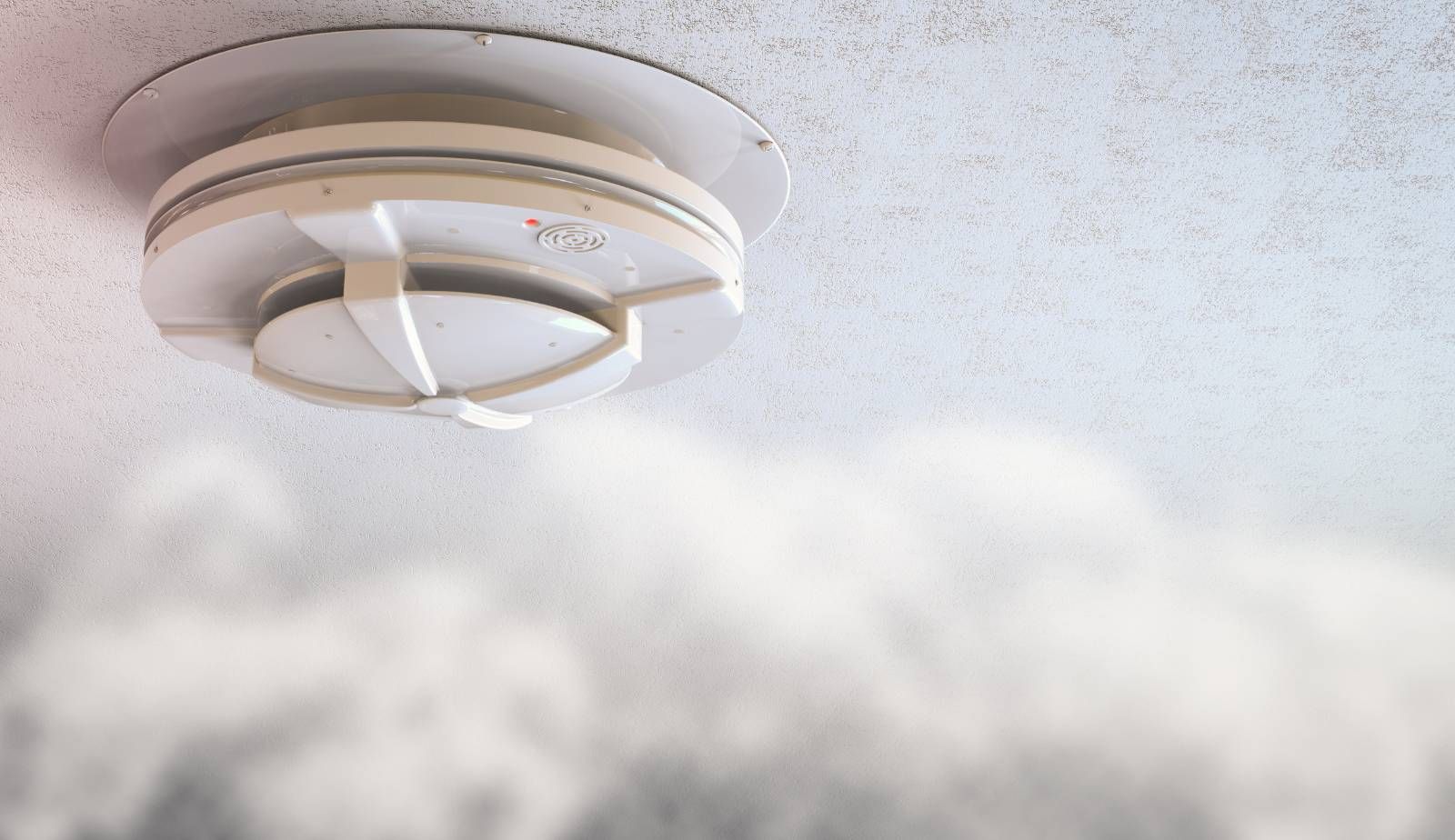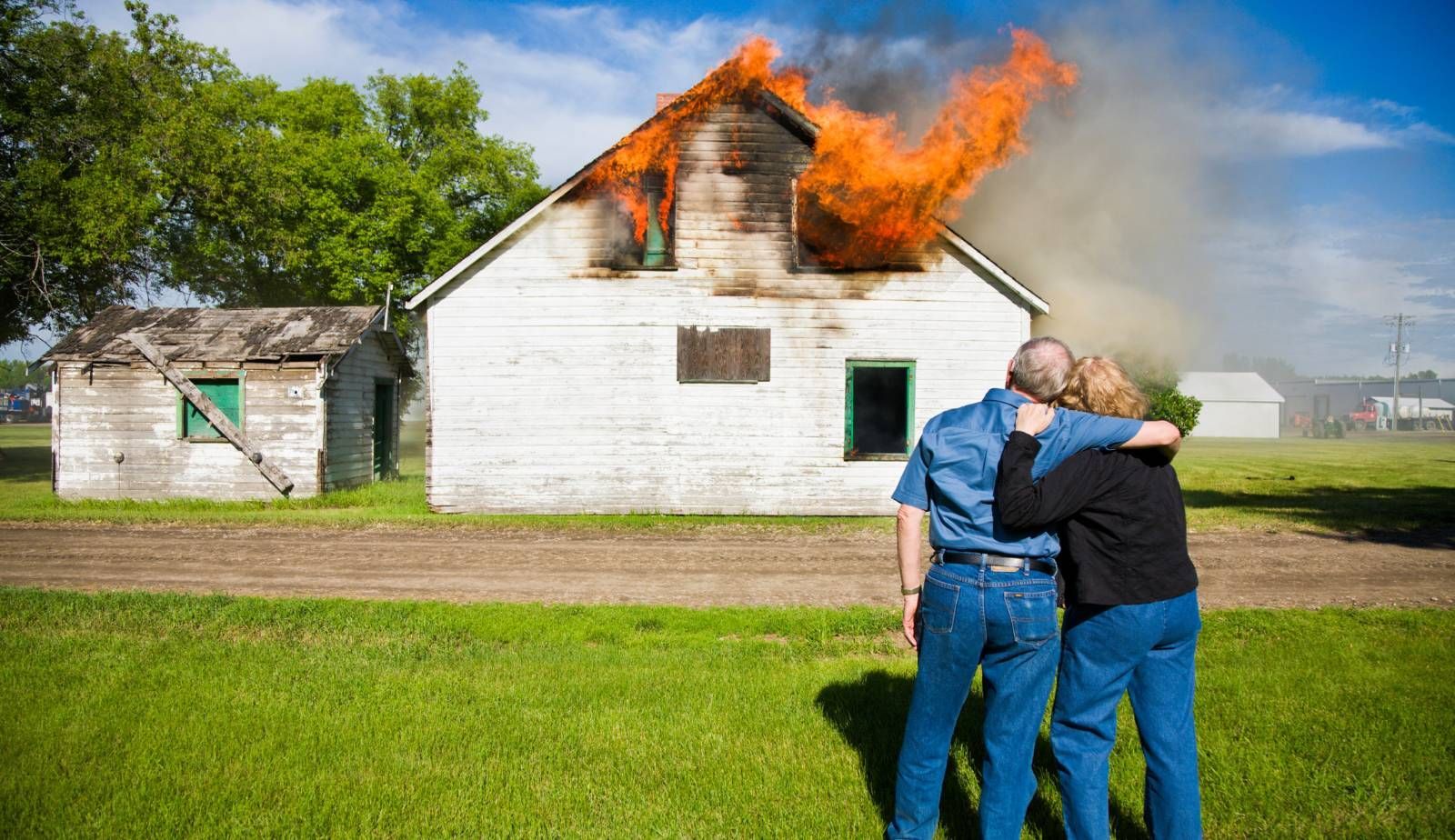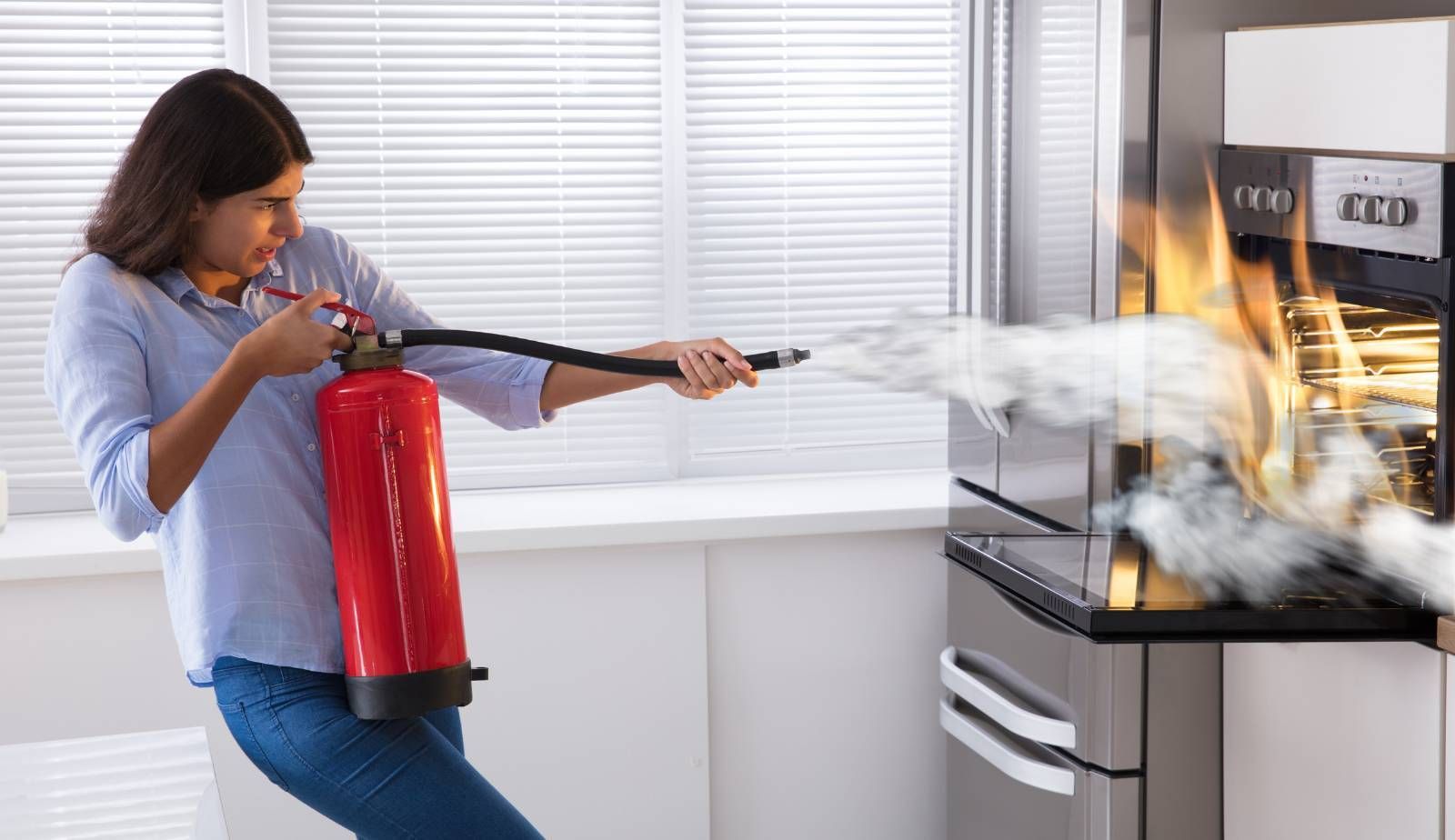The Hidden Dangers of Smoke and Soot After a Fire in Louisiana
After a fire, the damage extends far beyond the visible destruction. The hidden dangers of smoke and soot can severely affect indoor air quality and pose serious health risks. In Louisiana, where humidity can exacerbate these issues, smoke residue can infiltrate HVAC systems, leading to persistent odors and airborne contaminants that may trigger respiratory problems.
Soot is not just an unsightly residue; it can stain walls and infiltrate porous materials, compounding the restoration challenge. The presence of volatile organic compounds (VOCs) can linger long after the fire has been extinguished, making professional fire damage restoration essential to safeguard both health and property.
Drymax offers specialized equipment and odor-neutralizing treatments designed to address these unique concerns effectively. Their expertise ensures a thorough restoration process that not only removes visible damage but also mitigates the hidden risks posed by smoke and soot.
Understanding the Full Impact of Fire Damage
Fire damage extends beyond visible destruction, introducing health hazards and structural issues that may not be immediately evident. Soot and smoke play pivotal roles in this aftermath, compromising indoor air quality and property integrity.
Beyond Burned Materials: Invisible Hazards
The aftermath of a house fire often presents hazards that are not readily apparent. Toxic gases released during combustion can linger in the air, posing serious health risks.
Soot, a byproduct of incomplete combustion, can settle on surfaces and infiltrate HVAC systems. This can lead to poor air quality and respiratory issues, especially for those with pre-existing conditions.
Many homeowners underestimate the effects of smoke damage, as it can stain walls and fixtures, leading to long-lasting odor and discoloration. Professional restoration services help identify and mitigate these hidden dangers, ensuring a comprehensive approach to recovery.
The Role of Soot and Smoke in Property Damage
Soot and smoke significantly contribute to the deterioration of a home long after a fire is extinguished. Their corrosive properties can damage various building materials, including drywall, wood, and metal.
Smoke can infiltrate porous surfaces, making it difficult to remove without specialized treatment. The contaminants can also exacerbate existing problems, such as mold growth, if not addressed swiftly.
An effective fire damage restoration process focuses on removing soot and smoke thoroughly. Companies like Drymax utilize advanced equipment and techniques that specifically target these particles, ensuring that structures are restored to their pre-fire condition and reducing health hazards for residents.
How Smoke and Soot Spread After a Fire
The aftermath of a fire involves more than visible damage. Smoke and soot can infiltrate various areas of a home, often leading to hidden health risks and extensive repair needs. Understanding how they spread is essential for effective restoration.
Air Circulation and Microscopic Dispersion
Smoke contains a complex mixture of gases and microscopic particles. When a fire occurs, these particles can rapidly disperse throughout the environment. Air circulation, driven by wind, thermal currents, and HVAC systems, facilitates this spread.
As smoke rises, it can travel through open spaces and settle on various surfaces. The tiny size of these particles allows them to penetrate hard-to-reach areas. They can linger in the air long after a fire is extinguished, posing respiratory risks to anyone in the vicinity.
Soot Contamination in HVAC Systems
HVAC systems are particularly susceptible to soot contamination. After a fire, soot particles can be sucked into air ducts, spreading residue throughout the home whenever the system operates. This can lead to persistent odors and reduced air quality.
If not properly addressed, soot can coat the internal components of the HVAC system. This contamination can impair the system's efficiency and may require extensive cleaning or even replacement of parts. Regular inspections post-fire are crucial to ensure these systems are not compounding the problem.
Surface and Structural Penetration
Soot and smoke damage can severely affect walls, ceilings, and furnishings. Smoke often penetrates porous materials, resulting in stains and lingering odors. The chemical composition of soot means it adheres strongly to surfaces, making it challenging to clean.
After a fire, the affected areas may exhibit physical signs of damage, such as discoloration or corrosive effects. Without immediate intervention, the soot can cause paint to peel and wallpaper to lift. Thorough cleaning is essential to prevent long-term structural issues and safeguard the home's integrity.

Health Risks Associated With Soot and Smoke Exposure
Soot and smoke exposure after a fire poses multiple health risks that require attention. From respiratory problems to allergic reactions, the effects can be both immediate and long-term. Understanding these risks is essential for anyone involved in fire damage restoration.
Respiratory Issues After Fire Damage
Inhalation of soot particles can lead to various respiratory issues. People may experience coughing, wheezing, and shortness of breath as their airways react to the irritants present in the smoke.
Soot can aggravate existing conditions like asthma. Studies have shown that fine particulate matter found in soot can penetrate deep into the lungs, leading to inflammation and respiratory irritation. This can significantly impact daily activities and quality of life.
Allergic Reactions and Eye Irritation
Exposure to soot and smoke can trigger allergic reactions in sensitive individuals. Common symptoms include sneezing, nasal congestion, and itchy eyes.
The irritants in the smoke can cause eye irritation, resulting in redness and tearing. For individuals with pre-existing allergies, the fallout from a fire can exacerbate these conditions, leading to increased discomfort.
Proper cleaning and remediation are crucial for reducing these health risks.
Long-Term Exposure Risks
Long-term exposure to soot and smoke can result in serious health consequences. Continuous inhalation of toxic particles increases the likelihood of chronic respiratory diseases.
There is evidence suggesting that prolonged contact with these particles may lead to cardiovascular issues, further complicating existing health conditions. People exposed to smoke over time are also at risk of developing new respiratory complications, which can affect their overall well-being.
Carcinogens and Toxic Chemicals
Soot is not just an ordinary pollutant; it often contains carcinogens and other toxic chemicals. When materials burn, harmful substances like benzene and formaldehyde can be released into the air.
These toxic particles pose significant health risks. Prolonged exposure may increase the likelihood of developing cancer and other serious illnesses. It is crucial for individuals to minimize their exposure and seek expert assistance in cleaning and restoring affected areas.
The Effects of Soot and Smoke on Indoor Environments
Soot and smoke from fires can greatly impact indoor environments, leading to serious health risks and extensive property damage. These particulates can compromise air quality, leave persistent odors, and cause visible staining on surfaces. Understanding these effects is crucial for effective restoration.
Compromised Indoor Air Quality
Soot particles are ultrafine and easily inhaled, aggravating respiratory issues. When a fire occurs, these tiny particles can infiltrate HVAC systems, spreading contaminants throughout a home.
Common effects on indoor air quality include:
- Increased respiratory problems, especially for vulnerable individuals
- Aggravation of pre-existing conditions like asthma
- Decreased overall air quality due to the presence of volatile organic compounds (VOCs)
Proper assessment and cleaning of HVAC systems are essential to restore safe indoor air quality.
Lingering Odors and Smoke Residue
Smoke odor can persist long after a fire is extinguished. This odor results from smoke residues that settle on various surfaces, including furniture, walls, and carpets.
Key points about lingering odors include:
- They can affect the inhabitant's comfort and well-being
- Cleaning methods often fail to eliminate the source, allowing odors to return
- Specialized treatments and products are necessary to neutralize persistent smells effectively
Ignoring smoke residues can lead to ongoing odor issues and further contamination.
Visible and Invisible Staining
Soot and smoke can lead to both visible and invisible staining on walls and other surfaces. This staining is not only unsightly but also can indicate deeper damage requiring professional attention.
Focus points on staining include:
- Visible stains: These can result from soot settling on walls and ceilings, creating dark patches.
- Invisible staining: Smoke can leave behind harmful residues that affect air quality, even if not immediately noticeable.
Restoration often requires comprehensive cleaning to address both visible and hidden smoke damage.

Challenges in Fire Damage Restoration
Fire damage restoration goes beyond repairing visible burns. Restoration teams must confront hidden dangers such as structural integrity issues and persistent odors that can affect health and safety long-term.
Structural Integrity and Hidden Hazards
After a fire, assessing structural integrity is essential. Fire can weaken materials, leading to risks of collapse or damage. For example, wooden beams may char internally, compromising strength while appearing intact externally.
Soot and smoke residues can infiltrate HVAC systems, further complicating restoration. If left unaddressed, pollutants may circulate through the air, posing respiratory risks to occupants. Restoration experts must use specialized equipment to inspect structures thoroughly.
They often perform remediation measures to ensure that contaminants are eradicated. This includes air quality testing, smoke damage assessment, and structural evaluations. Proper evaluation is vital to making informed decisions about safety and repairs.
Addressing Persistent Odors
Fire-related odors can linger long after physical damage is repaired. Soot particles can embed themselves in surfaces, making odors challenging to eliminate.
Common examples include lingering smells within carpets, upholstery, and wall structures. These odors can affect indoor air quality and lead to long-term exposure risks for residents. Odor removal requires targeted treatments, including specialized deodorization processes.
Drymax employs advanced odor-neutralizing equipment that helps tackle stubborn smells effectively. Their approach often combines thermal fogging and ozone treatments to penetrate materials deeply and neutralize odors at the source. This ensures a healthier living environment post-restoration.
Specialized Cleanup and Remediation Solutions
Effective fire damage restoration goes beyond addressing burned materials. Specialized cleanup techniques are essential for removing soot and smoke residues, which can contaminate indoor air quality and damage surfaces.
Soot Removal Techniques and Cleaning Methods
Soot removal requires meticulous attention to detail. Professional cleaners use various methods to eliminate soot effectively from different surfaces. Techniques include:
- Dry Vacuuming: This method employs specialized vacuum cleaners designed to capture fine soot particles without spreading them further.
- Wet Cleaning: Professional-grade cleaning solutions can neutralize soot and lift it from surfaces. This method is often used on walls and floors.
- Chemical Treatments: Specific chemical agents are used for stubborn soot stains, particularly on porous materials.
Using these methods ensures that surfaces are thoroughly cleaned, reducing the risk of health issues and preventing further damage.
Advanced Air Scrubbing and Odor Neutralization
Air scrubbing is a critical step in restoring air quality after fire damage. Specialized air scrubbers filter out airborne soot particles and volatile organic compounds (VOCs) from the environment.
- HEPA Filters: These filters trap 99.97% of particles, significantly improving air quality.
- Odor Neutralizing Agents: Professional restoration services apply advanced treatments to eliminate persistent odors caused by smoke.
These solutions help mitigate respiratory issues and improve overall indoor air quality, making living spaces safe and comfortable again.
Why Trust Drymax for Your Louisiana Fire Restoration Needs
Drymax offers specialized fire restoration services tailored for the unique challenges posed by smoke and soot in Louisiana. Their approach combines advanced equipment with trained professionals to ensure a comprehensive and effective restoration process.
Specialized Equipment and Technology
Drymax utilizes state-of-the-art equipment designed specifically for fire restoration. This includes high-powered vacuums and air scrubbers that effectively remove soot and debris from surfaces and the air.
They also employ thermal imaging technology to identify hidden areas affected by smoke that are often overlooked.
Such technology ensures that HVAC systems are thoroughly cleaned, preventing further air contamination.
Additionally, Drymax uses odor-neutralizing treatments that are effective in addressing persistent smoke odors often left behind after a fire.
Trained Restoration Professionals
The team at Drymax consists of trained professionals who understand the complexities of fire damage restoration. These specialists are equipped with the knowledge and expertise to assess the full extent of damage accurately.
They are skilled in the restoration of both structural elements and contents of homes, providing thorough cleaning and sanitization.
Understanding the potential health risks associated with smoke and soot exposure, Drymax professionals prioritize safe practices throughout the process.
With continued training, they stay updated on the best techniques for fire restoration.
Safety Precautions and Health-Focused Solutions
Drymax places a strong emphasis on safety during the fire restoration process. They follow rigorous safety protocols to protect both their team and clients.
This includes using personal protective equipment (PPE) and ensuring proper ventilation when cleaning smoke-damaged areas.
By addressing health concerns, they utilize solutions that minimize restoration-related risks, particularly respiratory issues arising from soot exposure.
Their methodologies also prevent secondary contamination, safeguarding the well-being of clients as they recover from fire damage.
With a focus on thorough and safe restoration, Drymax stands out as a reliable choice for fire damage recovery in Louisiana.

Frequently Asked Questions
Smoke and soot from a fire can lead to various health risks and impact the overall quality of the living environment. Understanding these effects and the necessary remediation steps can help homeowners maintain safety and comfort after a fire incident.
What are the potential health effects of soot exposure following a fire?
Exposure to soot can result in respiratory issues, skin irritation, and eye problems. Inhaling soot particles may lead to aggravated asthma, bronchitis, or other chronic lung conditions. Those with pre-existing health issues, including children and the elderly, are particularly vulnerable to these effects.
How does smoke damage impact the indoor air quality of a home?
Smoke damage significantly deteriorates indoor air quality. Harmful chemicals and particulate matter released during combustion can linger in the atmosphere. This contamination may result in unpleasant odors and respiratory distress for occupants.
In what ways can soot and smoke affect the heating, ventilation, and air conditioning (HVAC) systems?
Soot can infiltrate HVAC systems, resulting in clogged filters and ductwork. This can hinder airflow, reduce system efficiency, and circulate contaminants throughout the home. Regular maintenance is essential to mitigate these effects and ensure cleaner air circulation.
What are common signs that walls and other surfaces have been stained by smoke and soot?
Visible stains on walls, ceilings, and other surfaces are common indicators of smoke and soot damage. Discoloration, brown or black marks, and persistent odors are often noticeable signs. Affected surfaces may also feel gritty or oily to the touch.
Can soot contamination lead to long-term respiratory issues?
Yes, prolonged exposure to soot can lead to long-term respiratory issues. Persistent inhalation of soot particles may increase the risk of developing chronic lung diseases. It's crucial to address soot contamination promptly to minimize potential long-lasting health effects.
What strategies do professionals like Drymax employ for odor-neutralizing treatments after a fire?
Professionals use specialized equipment such as air scrubbers and ozone generators to eliminate odors. Drymax implements chemical treatments that neutralize smoke odors at a molecular level. This multi-faceted approach ensures thorough removal of both soot and lingering smells.
You might also like
DryMax Restoration Blogs




